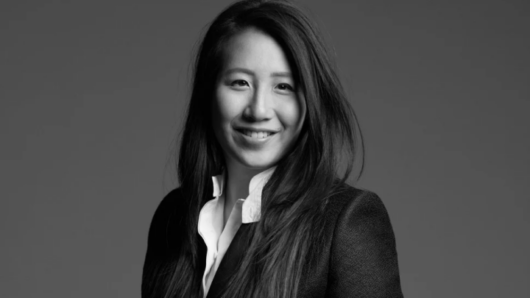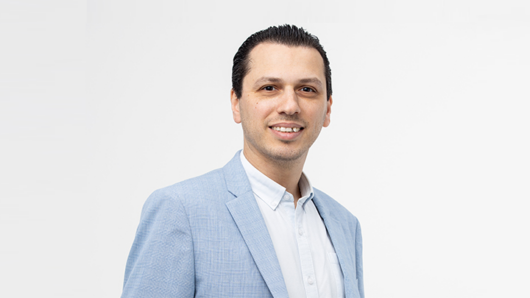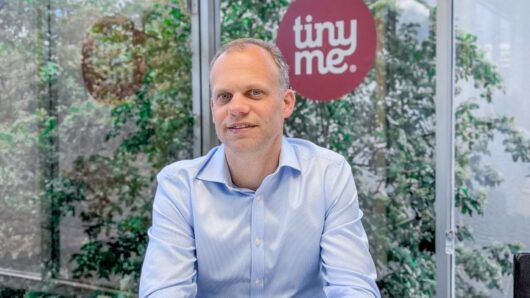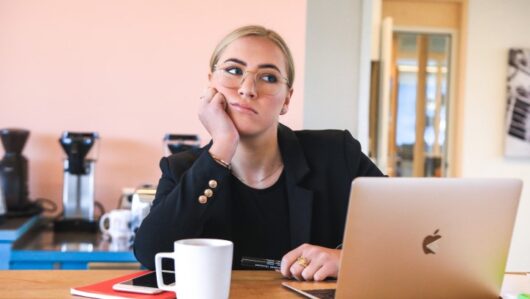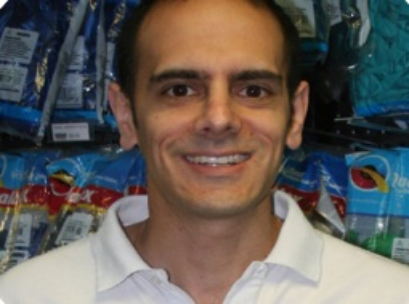 Dean Salakas got his first job at his parents’ party supplies store, The Party People, when he was just four years old.
Dean Salakas got his first job at his parents’ party supplies store, The Party People, when he was just four years old.
“My parents would give me and my brother a bucket of sand and have us fill up little bags that they would sell as balloon weights for 5 cents a bag. That was my introduction to retail and the party business,” Salakas tells IRW.
He continued working at the Sans Souci, NSW, store throughout his childhood, filling shelves and later doing deliveries and helping to set up an e-commerce site. In 2003, he wrote his university thesis on possible improvements to the business, including using Google AdWords, which was about to launch in Australia. According to Salakas, The Party People was the first local business to use the digital ad format and it started growing rapidly through its increased visibility online.
After graduating from the University of Western Sydney with a degree in marketing and operations management, Salakas lobbied for a job with Woolworths Group and was hired as a business analyst. He initially spent each day working in a different part of the business, from picking in the warehouse, to buying, to working in-store, and soon became known as the guy who could solve complex problems and cut costs out of thin air. Salakas says one of his projects ended up saving Woolworths $4 million a year in perpetuity, earning him the company’s Innovation Award that year.
But even as his profile at the company was growing, another opportunity presented itself. His parents were looking to retire and wanted to sell the business, so Salakas and his brother made an offer. For two years, Salakas continued working at Woolworths during the day, while fulfilling orders at The Party People at night, before finally focusing on the family business full time in 2010.
The brothers opened a second store in Drummoyne, NSW, in 2011, and ramped up their online business. Salakas last year said he expected to turn over $4 million in 2017, and while he now says he no longer provides specific details about the size of the business, he says it has grown since then.
Inside Retail Weekly: How has the last year been for The Party People?
Dean Salakas: We’ve had an awesome year. We’ve had 11 per cent sales growth in the last year, which is probably modest, but it’s a pretty good outcome considering we cut half a million in sales from Ebay.
IRW: When did you stop selling on Ebay, and why?
DS: We cut Ebay a little over a year ago, and we did it primarily because we were getting an average order value of around $40. Marketplace customers don’t tend to shop a [single] company’s store; they just browse for [different] products and buy them, so you don’t get a basketing effect like you do with a website. The average sale can be $80 to $100 on our website, and we found that Ebay was just not that profitable for us. We’ve actually cut our whole marketplace strategy for the short term. I’m looking at going back to it, but with a completely different strategy.
IRW: A lot of consumers discover brands and retailers through marketplaces. Have you found that leaving Ebay impacted traffic to your stores and/or website?
DS: The question around synergies is a difficult one. There was an impact, and that is probably one of the main reasons we’ll go back to marketplaces…because people were finding us on there. The strategy will be quite different though. It’s complicated and I don’t want to give away too much, but the focus won’t be on price, that’s for sure.
But our decision to leave Ebay last year was very considered. We looked at the cost savings we needed to achieve [to offset the loss in sales] and how we needed to achieve them. That came down to shuffling labour around, unfortunately. It was a tricky thing to navigate because we had an initial drop in sales and had to manage the labour around that, but then over the last 12 months, we’ve been getting higher order volumes, so we’ve seen our sales go up. Where does that come from? It’s just chipping away. We’re not getting 300 per cent growth anymore like we were early on [in the business]. Everything now is optimise this; optimise that, and if you get 1 per cent growth, you’re high-fiving each other.
IRW: People often talk about retail as an events-driven industry, but that’s probably even more true for a party supplies business like The Party People. What does your calendar look like?
DS: For us, events is huge, and there’s an enormous amount of sophistication around how we manage events. For instance, we buy for Christmas in January. It’s a peak time of year, so we have labour planning in August and merchandise planning in September. We have 15 different ‘projects’ to execute around Christmas, including applying to council to put a big Santa on the front of our store. There are all these activities that we’re working on from January through to December, and then we’ve got the same sort of thing happening in the lead-up to Fourth of July, American Independence Day. That buying happens in September/October. We’ve got something like 30-plus events in our calendar that are all at different stages in the cycle, so for us, we’re managing events on steroids. But we do it because it works; it’s lucrative. I think businesses if they focus on it just a little… I know that if we go half-arse at an event, we really pay the price, because if we don’t get the stock, we don’t get the sales, or vice versa. You really need to forecast, plan and manage events properly because it can really cost you.
IRW: Do you try to create some sense of balance throughout the year? Or is it more about embracing the seasonal nature of the business?
DS: October is our busiest time of year. We have Halloween, Melbourne Cup, then Oktoberfest, Book Week, and Christmas comes straight after. So we have three months of chaos. We try to shift activity in our business around that crazy peak, but then we have all our other little peaks throughout the year like Easter, St Patrick’s Day, Fourth of July, which do help us smooth out the way we operate our business.
IRW: When you started growing The Party People online, you introduced a real focus on digital advertising to the company. How has the digital advertising landscape changed over the past few years, particularly when it comes to cost and competition?
DS: When we started on Google AdWords, we were paying 1 cent per click because we were the only advertiser in the space. We had a nice big ad at the top [of the page], taking up a bunch of real estate, and it was super profitable. But it has definitely hit saturation now. The other thing is that over the last 10 years, we’ve seen that [new players] come into the space and spend a ridiculous amount of money to grow their market share. They’re making a loss, and they rarely sustain it, but you have this constant stream of new people coming in to compete with. That makes it really challenging, but we chase profit, not market share. We have a formula that is the ideal cost-to-spend on digital marketing, and sometimes that means we sit in position six, seven, or eight because it’s the only profitable position. If that’s the case, we roll with it. Our strategy is to have a better conversion rate than our competitors because if we can have a better conversion rate, then we can afford to spend more, bid higher and out-compete. Our formula helps us understand what we can afford to spend on a particular campaign, and we stick to it.
As you know, we also do a lot of PR. Getting in the media gets us seen by Google as a brand that is talked about by authoritative people. PR is our SEO strategy. There is no SEO strategy for us; there’s just a PR strategy, and it’s paying off. But it has become a topic of debate internally, because I spend a lot of time doing it, and some question whether it’s a value-add or an ego thing. But building my personal brand is important for the business.
IRW: You currently have two bricks-and-mortar stores, but you’ve stated that you’re looking to open more stores in future. Can you tell us more about your plans?
DS: We’re on track to do one store next year. That’s the most important and biggest project on my plate at the moment – the bricks-and-mortar rollout strategy. The details are quite confidential, but the general idea will be to do one store first and slowly accelerate that.
IRW: And finally, given the time you spent at Woolworths Group, what’s your take on how the business has been going lately?
DS: I was there when Roger Corbett was CEO. He was a highly aggressive ‘I don’t care what the rules are; we’re doing this’ type of guy, and I feel like the succession of CEOs after him have been really great, well respected people, but they haven’t had the tenacity that he had. For example, I can’t understand how Woolies has cost leadership over Coles, and yet Coles can go to them on a price war. To me, Woolies is trying to protect short-term shareholder value, rather than thinking long term. They should be going, ‘The world’s changing; our customers are changing. What do we need to do?’ In general, I struggle [to understand] these retailers that go out of business overnight. Surely, they saw the writing on the wall and realised they needed to change tactics aggressively.
I don’t like to be critical of anyone because you don’t know the inner workings of what’s happening at the top level, and it’s hard when you have shareholders you need to keep happy. Richard Umbers went through that at Myer. You can also put a strategy in place, and in 12 months, the world has changed. It’s the same deal with The Iconic. They made a loss for years, thinking that one day their model would turn into a nice profitable outcome. And then Amazon arrived. You go, ‘What’s the last 20 years been for if the world is going to change and our strategy is going to blow up?’


